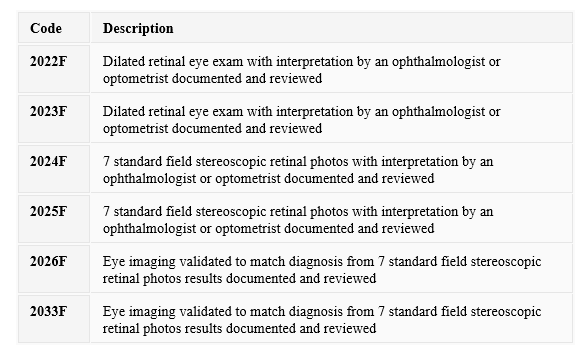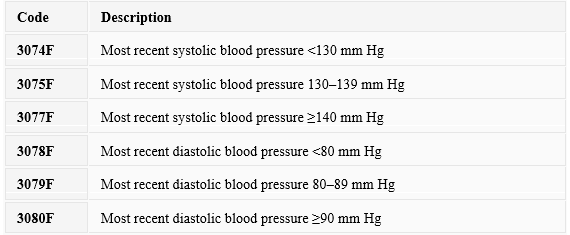Optimizing outcomes in diabetes: The role of BP, glycemic control, and retinal screening
Hemoglobin A1c (HbA1c) testing and control
HbA1c is a blood test that reflects a patient’s average blood glucose levels over the previous 2-3 months. HEDIS® measures evaluate:
- The percentage of diabetic patients who received at least one HbA1c test during the year.
- The percentage of patients whose most recent HbA1c value is controlled to specific thresholds, typically:
- HbA1c < 8.0% (good control)
- HbA1c > 9.0% (poor control; lower rates are better)
Routine HbA1c testing and maintaining optimal glycemic control play a vital role in reducing complications and improving overall diabetes management. Notably, this measure receives triple weighting in PQIP scoring, highlighting its critical importance in quality performance evaluation.

CPT Category II codes for Hemoglobin A1c levels should be submitted at the time of collection or result date. Codes should not be used for previous results.
Retinal eye exam
Diabetes increases the risk of retinopathy, which can lead to vision loss if not detected and treated early. HEDIS tracks the percentage of diabetic patients who received a retinal or dilated eye exam by an eye care professional during the measurement year (or within the previous year).

CPT Category II codes for retinal eye exam results must be submitted with the date of service of the eye exam.
Best practices for maximizing HEDIS diabetes scores
- Schedule annual diabetes exams and labs.
- Advise patients on controlling blood pressure, glucose, and cholesterol.
- Use EHRs to identify and address care gaps.
- Work with specialists to complete screenings.
- Record all care in a HEDIS-compliant format.
Controlling High Blood Pressure (CBP) Measure
It is important to emphasize that the Controlling High Blood Pressure (CBP) measure is notably influential in PQIP scoring, as it is weighted three times more than other measures. This highlights the critical need for thorough documentation and effective management.
CBP measure criteria
The current HEDIS specification for the CBP measure typically requires:
- Denominator – All patients ages 18-85 with a diagnosis of hypertension (essential hypertension) during the measurement period.
- Numerator – Those patients whose most recent blood pressure reading during the measurement year was less than 140/90 mm Hg.
Important note: Only the lowest systolic and lowest diastolic value documented on the same date during the measurement year are used. If multiple readings are taken on the same day, the lowest value is reported.
CPT II codes for blood pressure control
To support HEDIS reporting and quality improvement, specific CPT II codes are used to document blood pressure outcomes, including:

Strategies for improving blood pressure control
- Check blood pressure at every visit.
- Emphasize medication adherence and lifestyle changes.
- Coordinate care for patients with comorbidities.
- Use reminders and health tools to monitor and follow-up with patients.
- Document readings and CPT II codes accurately.
Conclusion
Effective management of diabetes and high blood pressure is essential in chronic disease care. The HEDIS measures offer providers clear targets for patient-centered, evidence-based treatment. Using these guidelines and proper documentation helps healthcare teams improve outcomes and support a better healthcare system.
Questions?
- Refer to your PQIP booklet.
- Contact the Quality Team at BCBSRI for further assistance at QualityHEDIS@bcbsri.org.

